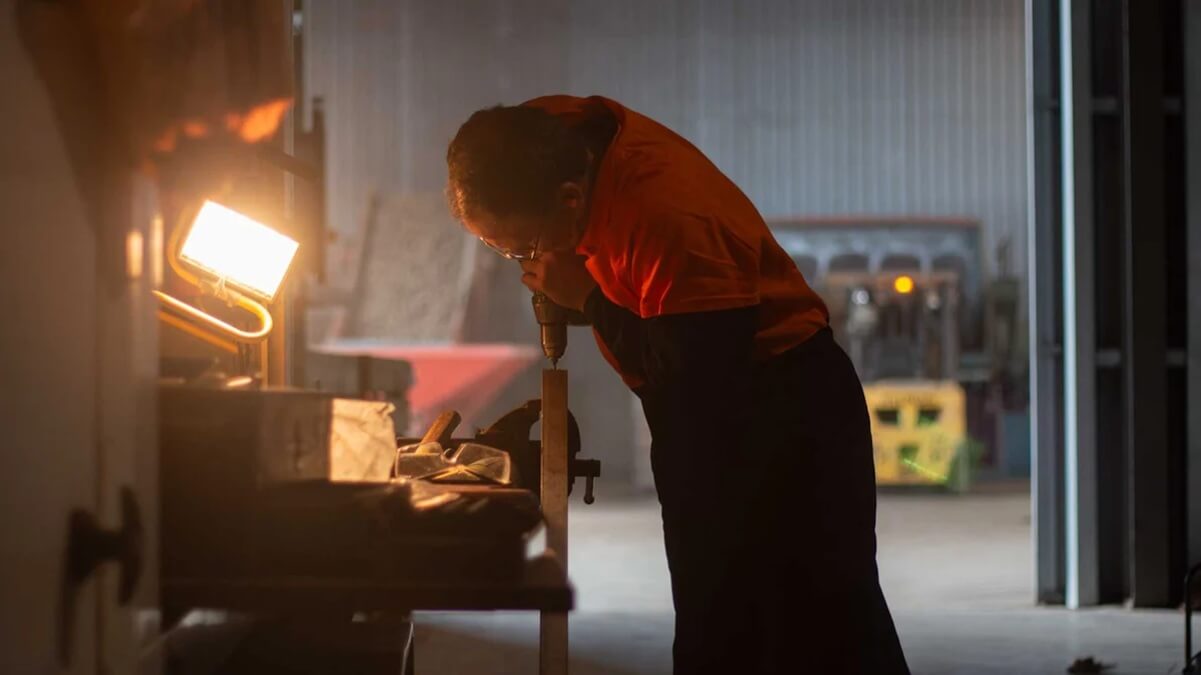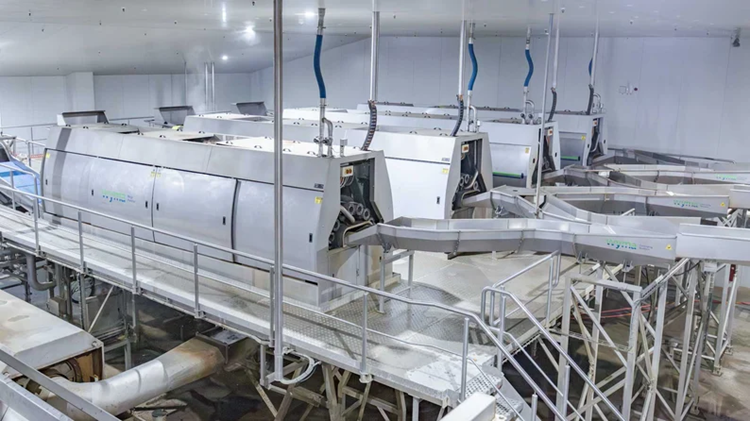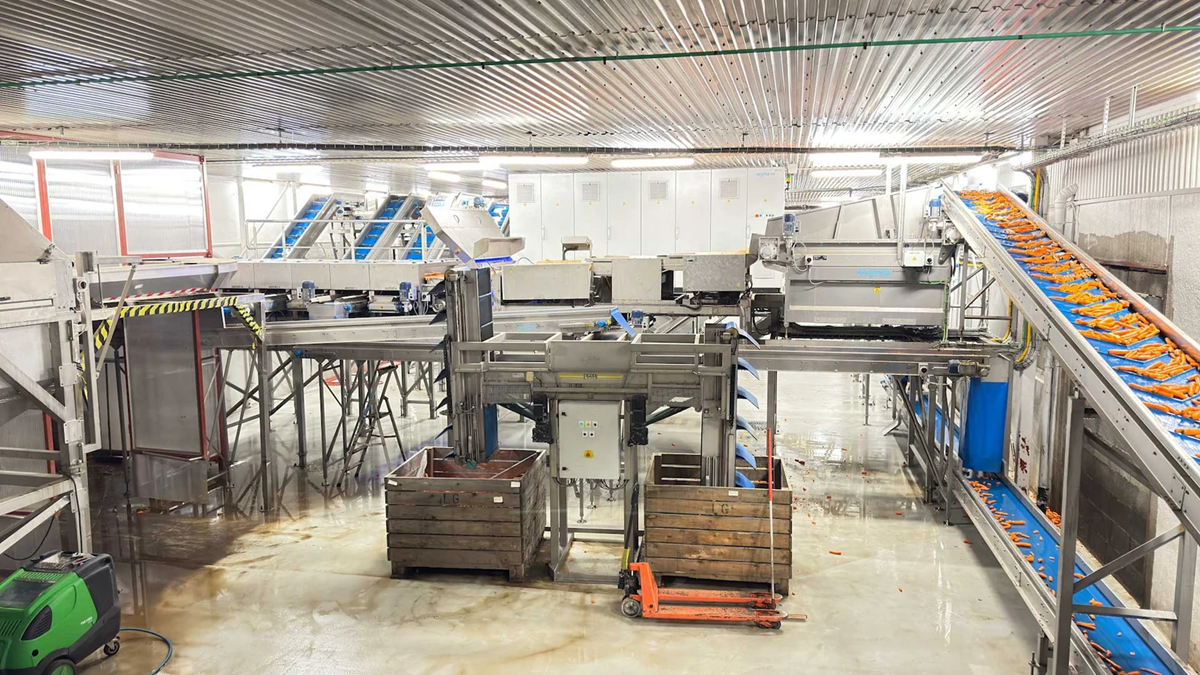Conditioning , Cooling and CA , Packaging , Processing
Stainless steel: The material of choice in the postharvest industry
At WYMA we recognize the unique benefits of stainless steel. Its immediate appeal to the postharvest industry is its corrosion resistance and hygienic properties, critical for a sector under increasing pressure for food safety compliance. Stainless steel is the obvious choice for our equipment, just as it is in the wider food processing, medical and hospitality sectors. While viewed by some as a higher-cost option, the investment is easily offset by the manufacturing, operational and financial benefits. Stainless steel products may have a higher initial cost than mild steel alternatives but they perform better and for longer, meaning reduced operational costs and greater equipment life cycle. Wyma?s systems and processes have been optimized to maximize the benefits of stainless. We have made significant investments in design systems, laser cutting technology and folding equipment, so our customers can benefit from highly optimized and easily cleanable equipment that will perform under the harshest conditions, season after season. This investment in technology and process also means we can rapidly respond to unique customer requirements, allowing for a high level of customization, simply not possible with older design methods. To learn more about how stainless steel equipment may benefit you postharvest operations please contact your local Wyma representative here. The benefits of stainless steel Hygienic properties: Stainless steel is more easily cleaned than other metals, making it an ideal choice for equipment in hospitals, kitchens, pharmaceutical and food processing facilities. Life-cycle savings: The durability and low maintenance requirements make stainless steel an effective option to reduce overall life-cycle costs. Ease of fabrication: Most grades of stainless steel are easily cut, welded and formed, allowing greater flexibility in fabrication. Elemental resistance: Stainless steel offers great corrosion and temperature resistance. Low-alloy grades are more resistant to challenging atmospheric conditions while high-alloys are more resistant to acids, alkaline solutions, chloride-bearing environments. Whether in very high or cryogenic temperatures, stainless steel shows exceptional toughness. Aesthetic appeal: Ease of maintenance and cleaning and an array of surface finishes give stainless steel equipment a consistently high-quality and pleasing appearance.
28 August, 2020
At WYMA we recognize the unique benefits of stainless steel. Its immediate appeal to the postharvest industry is its corrosion resistance and hygienic properties, critical for a sector under increasing pressure for food safety compliance. Stainless steel is the obvious choice for our equipment, just as it is in the wider food processing, medical and hospitality sectors. While viewed by some as a higher-cost option, the investment is easily offset by the manufacturing, operational and financial benefits. Stainless steel products may have a higher initial cost than mild steel alternatives but they perform better and for longer, meaning reduced operational costs and greater equipment life cycle. Wymas systems and processes have been optimized to maximize the benefits of stainless. We have made significant investments in design systems, laser cutting technology and folding equipment, so our customers can benefit from highly optimized and easily cleanable equipment that will perform under the harshest conditions, season after season. This investment in technology and process also means we can rapidly respond to unique customer requirements, allowing for a high level of customization, simply not possible with older design methods. To learn more about how stainless steel equipment may benefit you postharvest operations please contact your local Wyma representative here. The benefits of stainless steel Hygienic properties: Stainless steel is more easily cleaned than other metals, making it an ideal choice for equipment in hospitals, kitchens, pharmaceutical and food processing facilities. Life-cycle savings: The durability and low maintenance requirements make stainless steel an effective option to reduce overall life-cycle costs. Ease of fabrication: Most grades of stainless steel are easily cut, welded and formed, allowing greater flexibility in fabrication. Elemental resistance: Stainless steel offers great corrosion and temperature resistance. Low-alloy grades are more resistant to challenging atmospheric conditions while high-alloys are more resistant to acids, alkaline solutions, chloride-bearing environments. Whether in very high or cryogenic temperatures, stainless steel shows exceptional toughness. Aesthetic appeal: Ease of maintenance and cleaning and an array of surface finishes give stainless steel equipment a consistently high-quality and pleasing appearance.












